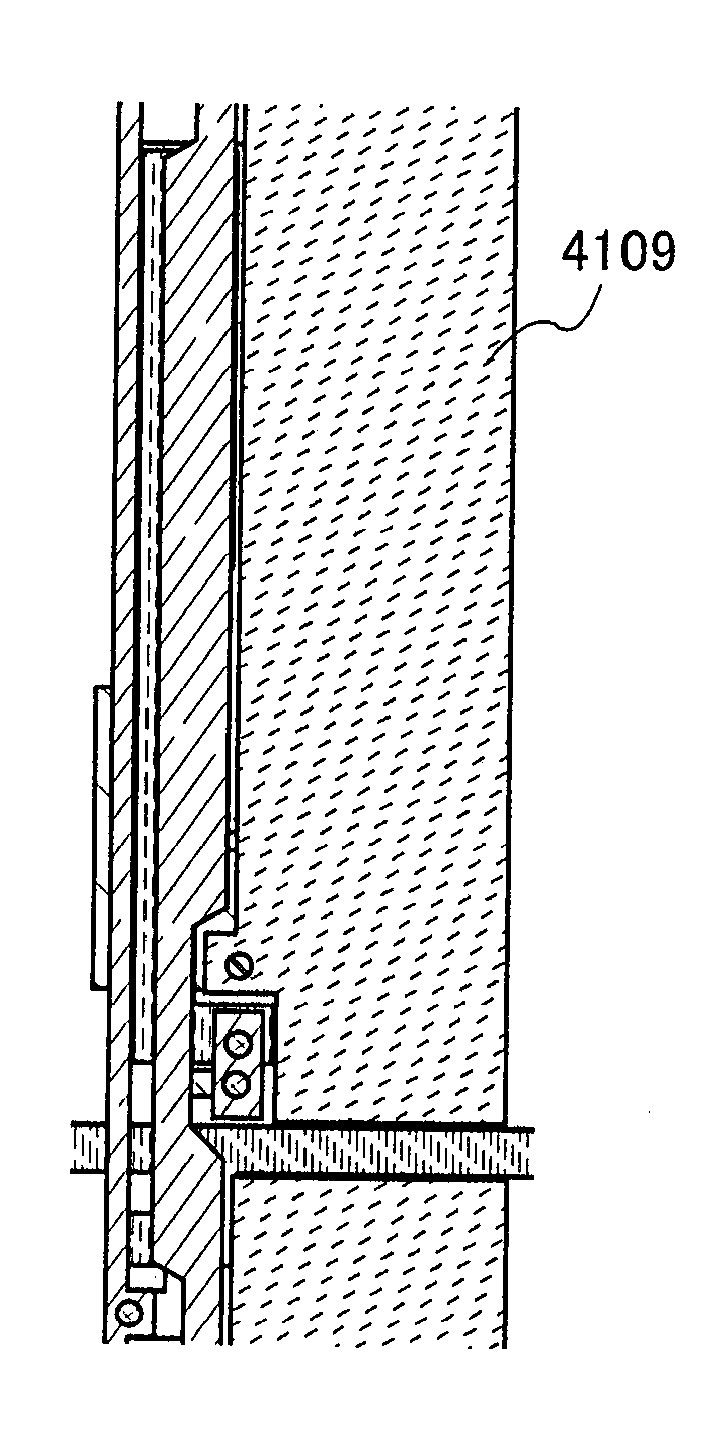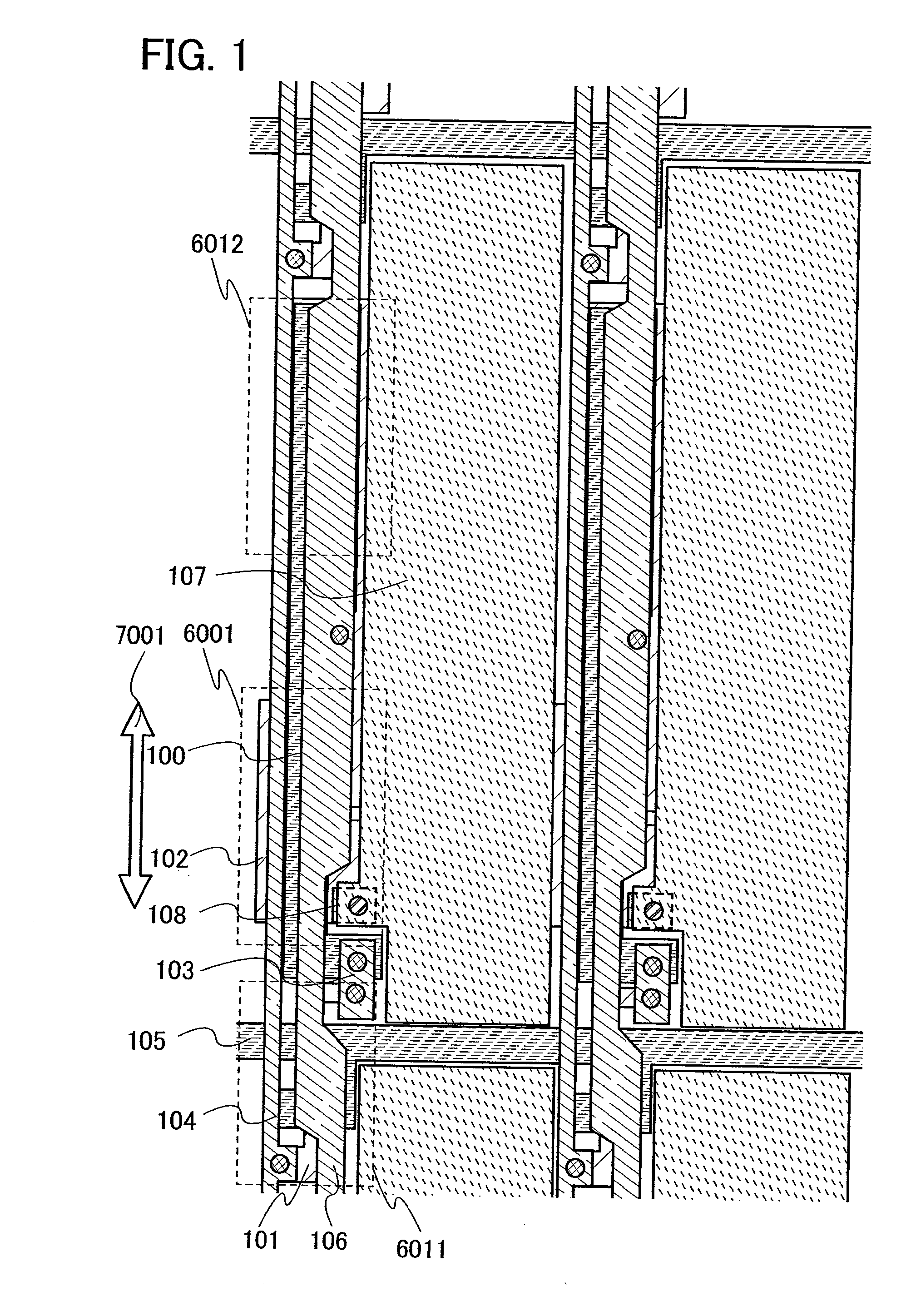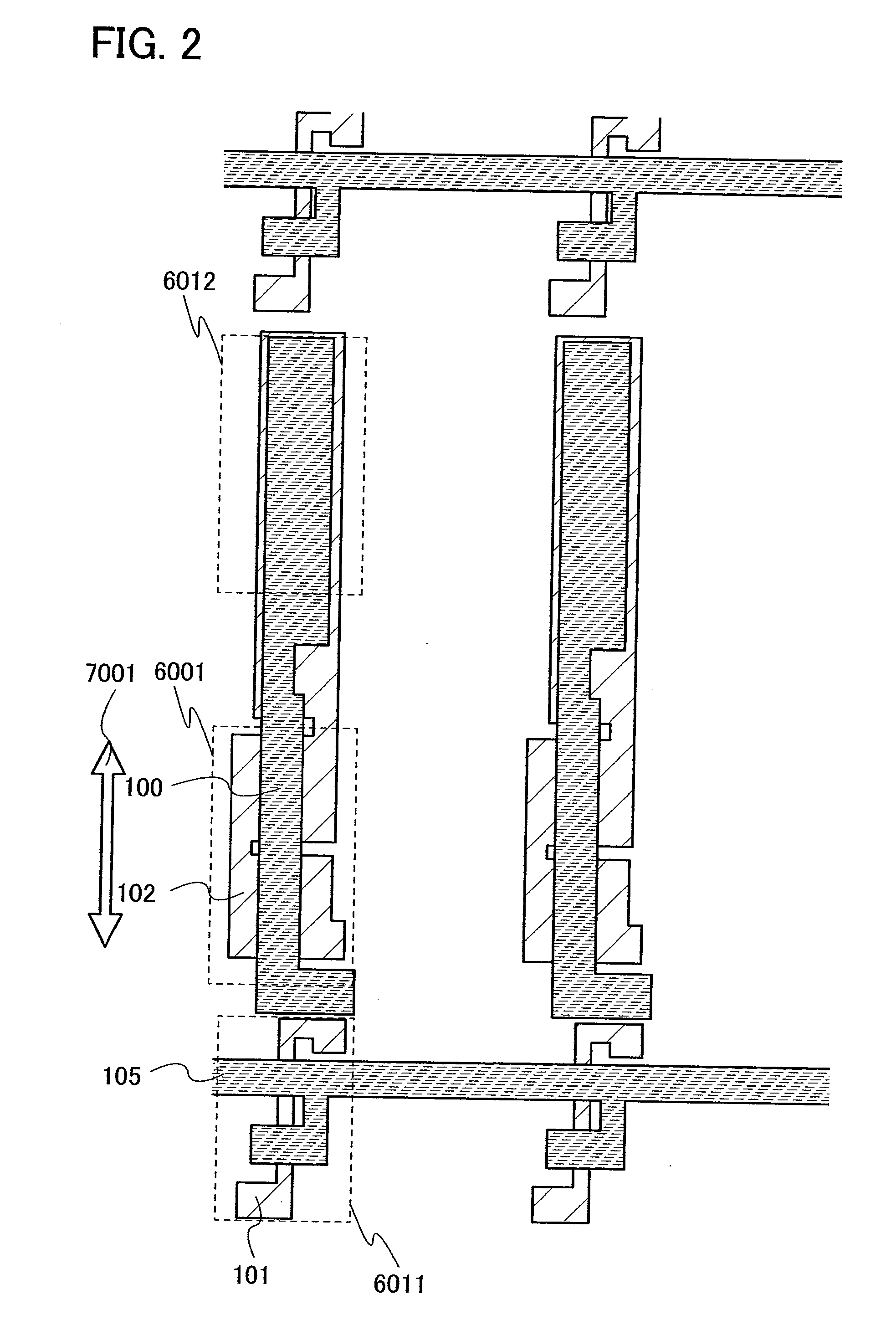Display device and semiconductor device
- Summary
- Abstract
- Description
- Claims
- Application Information
AI Technical Summary
Benefits of technology
Problems solved by technology
Method used
Image
Examples
embodiment mode 1
[0062]In this embodiment mode, a pixel structure and a layout of a display device of the present invention will be described. Note that a pixel formed of two TFTs is described here.
[0063]First, the pixel structure of the display device of the present invention is described with reference to FIG. 3. A pixel includes a TFT (driving TFT 301) connected to a pixel electrode, a capacitor 300, a switching TFT 302, a display element 303, a scanning line 305, a signal line 304, and a power supply line 306. Note that the driving TFT 301 and the switching TFT 302 each have a double-gate structure that includes two channel formation regions.
[0064]Note that the driving TFT 301 may have a single-gate structure or a multi-gate structure that includes three or more channel formation regions.
[0065]Either one of a source terminal or drain terminal of the switching TFT 302 is connected to the signal line 304.
[0066]A gate terminal of the switching TFT 302 is connected to the scanning line 305.
[0067]The...
embodiment mode 2
[0124]In this embodiment mode, the meaning of “a longitudinal direction of a wiring” will be specifically described with reference to FIGS. 5, 6, and 7.
[0125]The “longitudinal direction of the wiring” (“channel width direction”) is the above-described “direction parallel to the direction in which current flows through the wiring arranged over the channel formation region.” Note that, in the case of a wiring having a zigzag shape or a wiring having a meander shape to be described later, current does not necessarily flow in a linear direction in the wiring. In this case, the “longitudinal direction of the wiring” (“channel width direction”) is a “direction approximately parallel to the direction in which current flows through a wiring region that is arranged over the channel formation region.”
[0126]Here, the shape of the wiring need is not necessarily a straight line as shown in FIG. 5. For example, as shown in FIG. 6, the shape of the wiring may be a zigzag shape, as first wirings 50...
embodiment mode 3
[0134]In this embodiment mode, another variation of a layout of a driving transistor of the present invention will be exemplified. Note that the present invention is not limited to the layout exemplified in this embodiment mode.
[0135]FIG. 8 shows a layout of a single-gate structure. The first semiconductor layer 101 is an island-shaped semiconductor layer of a switching TFT. A region that overlaps with the gate wiring 105 is a channel formation region. A region that is connected to the signal line 104 through a contact hole is a source terminal (or a drain terminal). A region that is connected to the connection electrode 103 is the drain terminal (or the source terminal).
[0136]Further, the second semiconductor layer 102 is the island-shaped semiconductor layer of the driving TFT 301 that drives the display element. In addition, a region that overlaps with the gate electrode 100 is a channel formation region. The gate electrode of the driving TFT 301 is connected to the connection el...
PUM
 Login to View More
Login to View More Abstract
Description
Claims
Application Information
 Login to View More
Login to View More - Generate Ideas
- Intellectual Property
- Life Sciences
- Materials
- Tech Scout
- Unparalleled Data Quality
- Higher Quality Content
- 60% Fewer Hallucinations
Browse by: Latest US Patents, China's latest patents, Technical Efficacy Thesaurus, Application Domain, Technology Topic, Popular Technical Reports.
© 2025 PatSnap. All rights reserved.Legal|Privacy policy|Modern Slavery Act Transparency Statement|Sitemap|About US| Contact US: help@patsnap.com



